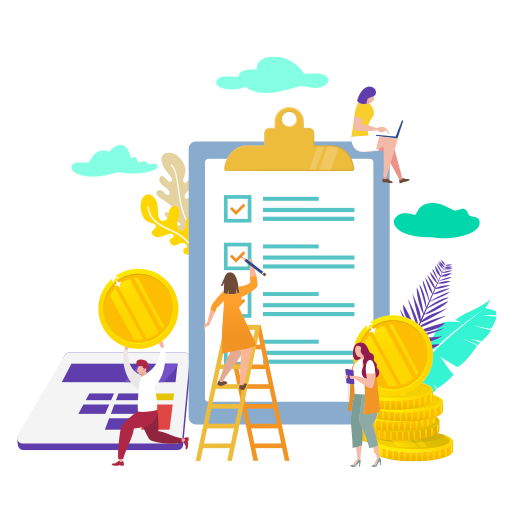
- Home
- Global Payroll
- Digital Transformation in HR & Payroll – A Complete Guide
Digital Transformation in HR & Payroll – A Complete Guide
Published :

Human Resources personnel are the connectors that bind an organization and its workforce. The first and last point of contact of any employee is with the HR team and hence they play an inherent role of addressing all needs and concerns of the employees.
In the time of a crisis such as the ongoing pandemic, HR & payroll personnel have been leading the organisational transformation from the front. They had to revise work conditions, facilities, and processes in a digitised manner to ensure that employees were able to work remotely, comfortably, and most importantly efficiently.
The challenges faced by the HR personnel in the wake of the pandemic have been quite testing and extensive. With the sudden, organisation-wide changes ushered in by the protocols, HR professionals had to work extensively and ensure that the transition doesn’t disrupt the day-to-day functioning of the company. Processing leaves, establishing new rules related to time and attendance, ensuring that the employees receive necessary communication and equipment support to work remotely, tasks have been humongous and tiresome.
Contrary to being perceived as anti-employees in the past, in the new normal the HR functions and responsibilities have changed, and the perception is that they have become more pro-employees than ever. In most cases, in addition to the HR & payroll tasks, they are now going beyond their role of being the link between the management and the workforce, HR in the new normal has assumed the role of guides and support systems for the employees.
Considering how the entire business operations have turned digital and online, it is essential for the HR and payroll functions to undergo digital transformation as early as today! With employees being dispersed across locations enabling digital access to payroll functions, attendance management and employee engagement are a given in the new normal for any company that aims to keep its employees happy and motivated. In the remote working scenario, it is normal for employees to start feeling distanced, stressed and face collaboration and efficiency challenges. In such stressful times, incorrect or delayed payroll processing, granting of leaves, or discrepancies of time and attendance can cause further disenchantment among the employees.
Using technology is the ideal solution for successfully navigating all these challenges. Leading enterprises and even start-ups are now turning employee-centric through the deployment of digital HR and payroll technologies.
Replacing conventional payroll processes with cloud payroll and HR software is one of the best ways to deliver a frictionless employee experience. A world-class cloud payroll system would take care of end-to-end HR and payroll functions. Online leave application, Salary slip generation, accessing taxation and payroll details etc. become a breeze with the anytime, anywhere power of online HR software. Another option that could benefit not only the employees, but the HR personnel themselves is to opt for a managed payroll service provider. A world-class managed payroll services provider will also offer all the benefits that a modern cloud payroll software does. However, since the process is outsourced, it will require minimal inputs from HR or the employees. There will be end-to-end automation and digitization of core HR services which will help the HR get the additional time that they can use to engage, guide, or train the employees.
Technology has emerged as the greatest driver of efficiency and business success in the new normal. Thus, it makes perfect sense for any business, irrespective of its scale and industry, to ensure digital transformation of the HR and payroll operations. This is a sure-shot way of keeping company culture intact and ensuring business growth through HR support!
Enterprise asset management (EAM) involves the management of mission critical assets of an organization throughout each asset's lifecycle. EAM is used to plan, optimize, execute, and track the needed maintenance activities with the associated priorities, skills, materials, tools, and information. The aim is to optimize the quality and utilization of assets throughout their lifecycle, increase productive uptime and reduce operational costs.
Enterprise asset management (EAM) involves the management of the maintenance of physical assets of an organization throughout each asset's lifecycle. EAM is used to plan, optimize, execute, and track the needed maintenance activities with the associated priorities, skills, materials, tools, and information.
The software helps in effective maintenance of assets through preventive, predictive, shutdown and breakdown maintenance strategies. The system also helps enterprises mitigate equipment risks by enhanced safety standards. The streamlined operations and improved asset performance helps organizations increase their investment effectiveness.
EAM is important because it helps organizations track, assess, manage and optimize asset quality and reliability. Asset intensive Organizations have hundreds, thousands, even millions of assets which needs to be maintained to maximize / optimize life of these assets to increase the return on investment.
The key features of effective EAM are:
Asset Intensive companies under the following Industries :
Contact us for a meeting and schedule a demo
This differs on case to case basis, based on the type of installation and unique industry specific requirements. Contact us for a meeting and schedule a demo.
This differs on case to case basis, based on the type of installation and unique industry specific requirements. Contact us for a meeting and schedule a demo.
Stay Connected, follow us on LinkedIn / Twitter to know more about EAM Software latest trends.

All Rights Reserved. © Copyright 2024. Ramco Systems.